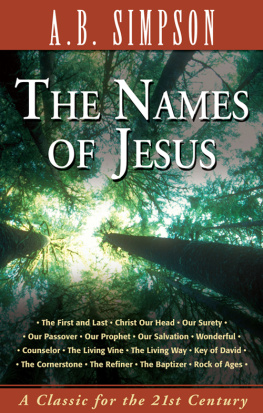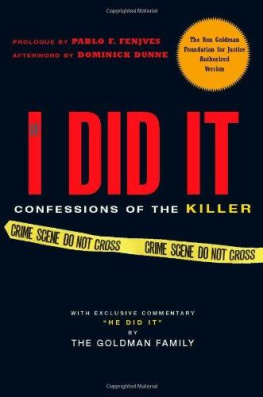James Young Simpson - Archæological Essays, Vol. 2
Here you can read online James Young Simpson - Archæological Essays, Vol. 2 full text of the book (entire story) in english for free. Download pdf and epub, get meaning, cover and reviews about this ebook. year: 2014, publisher: AS Team, genre: Romance novel. Description of the work, (preface) as well as reviews are available. Best literature library LitArk.com created for fans of good reading and offers a wide selection of genres:
Romance novel
Science fiction
Adventure
Detective
Science
History
Home and family
Prose
Art
Politics
Computer
Non-fiction
Religion
Business
Children
Humor
Choose a favorite category and find really read worthwhile books. Enjoy immersion in the world of imagination, feel the emotions of the characters or learn something new for yourself, make an fascinating discovery.

- Book:Archæological Essays, Vol. 2
- Author:
- Publisher:AS Team
- Genre:
- Year:2014
- Rating:4 / 5
- Favourites:Add to favourites
- Your mark:
- 80
- 1
- 2
- 3
- 4
- 5
Archæological Essays, Vol. 2: summary, description and annotation
We offer to read an annotation, description, summary or preface (depends on what the author of the book "Archæological Essays, Vol. 2" wrote himself). If you haven't found the necessary information about the book — write in the comments, we will try to find it.
Archæological Essays, Vol. 2 — read online for free the complete book (whole text) full work
Below is the text of the book, divided by pages. System saving the place of the last page read, allows you to conveniently read the book "Archæological Essays, Vol. 2" online for free, without having to search again every time where you left off. Put a bookmark, and you can go to the page where you finished reading at any time.
Font size:
Interval:
Bookmark:

M.D., D.C.L.
ONE OF HER MAJESTY'S PHYSICIANS FOR SCOTLAND, AND PROFESSOR OF MEDICINE
AND MIDWIFERY IN THE UNIVERSITY OF EDINBURGH
JOHN STUART, LL.D.
SECRETARY OF THE SOCIETY OF ANTIQUARIES OF SCOTLAND
EDMONSTON AND DOUGLAS
PUBLISHERS TO THE SOCIETY OF ANTIQUARIES
MDCCCLXXII
| Page |
I. On Leprosy and Leper Hospitals in Scotland and England |
Communication read before the Medico-Chirurgical Society of Edinburgh, 3d March 1841, and printed in the Edinburgh Medical and Surgical Journal (vol. lvi. p. 301; vol. lvii. p. 121). [Additional Notes by Joseph Robertson, LL.D.] |
II. Notes on some Ancient Greek Medical Vases for containing Lykion; and on the modern use of the same Drug in India |
Read to the Society of Antiquaries of Scotland, 26th February 1852. Proc. vol. i. p. 47. Reprinted separately in 1856, and Inscribed to Dr. Sichel of Paris Edinburgh: Sutherland and Knox. |
III. Was the Roman Army provided with Medical Officers? |
Printed as a Pamphlet, at Edinburgh, 1856 (Sutherland and Knox), and Inscribed to James Pillans, Esq., F.R.S.E., Professor of Humanity in the University of Edinburgh, etc. etc., as a Small Tribute of sincere Esteem from an Old and Attached Pupil. With One Plate. |
IV. Notices of Ancient Roman Medicine-Stamps, etc., found in Great Britain |
Communicated to the Monthly Journal of Medical Science, January, March, and April 1851. With Four Plates. |
V. Antiquarian Notices of Syphilis in Scotland |
Communicated to the Epidemiological Society of London, 1862. Trans. vol. i. part ii. Reprinted privately at Edinburgh (Edmonston and Douglas), Inscribed to the most learned Physician of Modern Times, James Copland, Esq., M.D., Author of the Dictionary of Practical Medicine. |
IN SCOTLAND AND ENGLAND.
Font size:
Interval:
Bookmark:
Similar books «Archæological Essays, Vol. 2»
Look at similar books to Archæological Essays, Vol. 2. We have selected literature similar in name and meaning in the hope of providing readers with more options to find new, interesting, not yet read works.
Discussion, reviews of the book Archæological Essays, Vol. 2 and just readers' own opinions. Leave your comments, write what you think about the work, its meaning or the main characters. Specify what exactly you liked and what you didn't like, and why you think so.






![Kyle Simpson [Kyle Simpson] - You Don’t Know JS: Up & Going](/uploads/posts/book/121420/thumbs/kyle-simpson-kyle-simpson-you-don-t-know-js.jpg)

